The DBA Awards, published earlier this month on Warc.com, recognise design projects that are creatively and commercially effective. There are 60 case studies in total, which Warc subscribers can view here. Amongst a strong roster of brands old and new, we have dug out, debated, and curated these highlights from the awards.
GREAT Britain Campaign: Creating impact for Britain around the world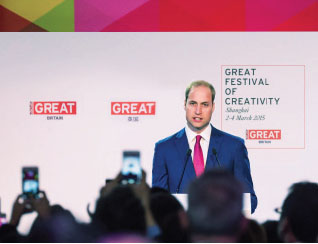
Many people know about Great Britain, but fewer people get excited about it. Presented with the opportunity of the 2012 Olympics, and the need created by the economic downturn, Her Majesty’s government created a consistent brand to promote Britain overseas. Keen to present the UK as a place to visit, study, and invest, the country took the word ‘GREAT’ as its brand, uniting multiple strands of Britishness under one strong voice. This simple brand framework translated to comprehensive scripts and guidelines used on the international stage. A big campaign with enormous effectiveness, the GREAT brand brought a £1.2bn direct return to the UK economy.
Heritage arose as a successful theme this year, with Newby, the UK based tea brand mined the rich international history of tea for its redesign with the aim of appealing to Waitrose customers and conveying a premium identity. The Chitra Collection, the world’s finest collection of antique, rare tea-wares owned by Mr Nirmal Sethia, Chairman of Newby, inspired the idea: each pack features a piece of tea-ware from the Collection. Sales increased threefold as a result, with Waitrose accepting the range across 284 stores. The range was then accepted at a number of prestigious hotels such as Gleneagles and Burj al Arab. A best-seller online, the range attracted specialist bloggers and tea aficionados.
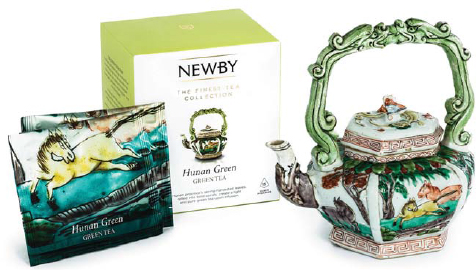
Using design, Tanqueray No. TEN moved from a static brand in a dynamic segment into rapid commercial growth. In a crowded international market that was seeing a revival of interest in gin, Diageo was losing its share of the market. The brand needed to reposition and differentiate, and it chose to do so using its bottle. Channelling Art-deco cocktail shakers and the iconic symbol of the Jazz-age, the martini glass, Tanqueray created a bottle that shines. Its unique story is coupled with its fresh-citrus distillation. The campaign achieved a 32% increase in growth, compared to a global category growth of 0.2%, and a 350% growth in category investment.
Lick Frozen Yogurt: Launching the UK's favourite frozen yogurtLick Frozen Yogurt focused on its packaging design to successfully launch the brand into the UK mainstream retail market. While value sales of ice cream increased by over 7% during the summer of 2013, the volume sales actually fell by more than 3% over the same period – presenting an opportunity for frozen yogurt. Lick invested £12,000 in rebranding their product with new packaging that would have maximum impact in store, hero the act of licking, highlight the key selling points and tell the stories of the founders with naive visuals. The campaign led to an increase in sales from £100k in February 2014, to £1.3m two years later; it also resulted in a 600% increase in market value, a 500% increase in market share and 1500% rise in online engagement with Facebook followers.
IRN-BRU's Tartan Army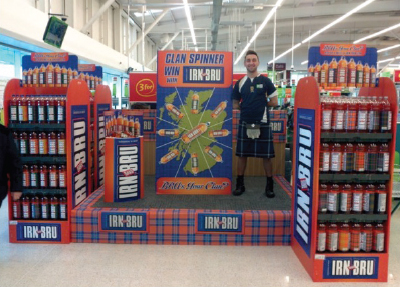
Scotland's leading carbonated drink, IRN-BRU, created time-limited individual tartan labels to create buzz and engage their loyal fan base. Constantly battling against bigger brands in a grocery price war, IRN-BRU remains salient through its sharp, irreverent and courageous advertising. 58 tartan designs were combined with 11,000 surnames and randomly placed on over 5.5 million bottles made available for only three months. For many Scottish people tartan symbolises their collective or individual identity as it originally identified membership of the clans; this made it the perfect packaging for the proudly Scottish IRN-BRU. One customer said, ‘I'm not gonna lie – I bought this because it had my clan on it…’ The target of a 10% growth in website traffic was smashed by the real uplift of 185%, whilst there was also a 17% increase in sales and each £1 invested in the design returned £34.
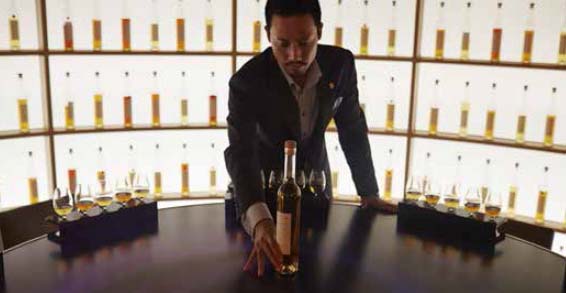
Diageo established Scotch whisky as part of a sophisticated and luxurious lifestyle in China by creating an embassy for whisky culture: The Johnnie Walker House. The key problem was that whisky was not seen as a luxury beverage in China in comparison with the more established drinks of Cognac and Baijiu. LOVE created an unprecedented ultra-VIP luxury brand experience space for Johnnie Walker in Shanghai that included layered narratives, art installations and interactive experiences. The result was the establishment of 10 other Johnnie Walker Houses – including one in Beijing –Brand awareness increased from 74% in Q1 2013 to 97% in Q1 2015. The beverage giant saw a year-on-year footfall increase of 20%.
True North's campaign, on behalf of Manchester City Council, created, from scratch, an event that would offer intellectually engaged people something interesting and stimulating to do after work, all with zero budget. The former dean of Manchester University, inspired by the accessible IQ2 debates in London, wanted to emulate these events and stimulate 'the city's intellectual curiosity,' competing with the full range of the city's cultural offerings. Insight showed particular interest in the areas populated by academics and professionals, and older, more wealthy, residents of Cheshire suburbs: this adapted the pricing to appeal to a mind-set rather than a demographic. Each debate would have two opposing posters suggesting the different views, finished with an exam-style 'discuss'. 65 people attended the first, free event and within a year, on average 160 attendants were paying £7 for entry; 39% of the audience were first-time debaters, and 40% did not have a degree. Sustainability was ensured by the Guardian newspaper becoming a media partner, and the Central Library offering to host the events for free.
Miller Lite: How brand re-birth created brand growthMiller Lite reinvigorated its iconic brand in the US by rediscovering its roots and the 1970's ML packaging. ML created the light beer segment, but competition had turned Miller into an imitator that followed rather than led – this had resulted in a 30% decrease in sales over two decades. To address this, Miller went back to its past and built an authentic brand identity by interpreting the core of the original ML can design in a modern way and introducing elements across all media. The idea was not simply to cut and paste 1970's ideas onto the 21st century, but to re-craft each asset so that the glossy marketing gimmicks disappeared to reveal a timeless brand. Volume grew for the first time in seven years, brand perceptions improved and profit increased by over $30 million – all with 7% less marketing investment than in 2013.
Jump In! The power of play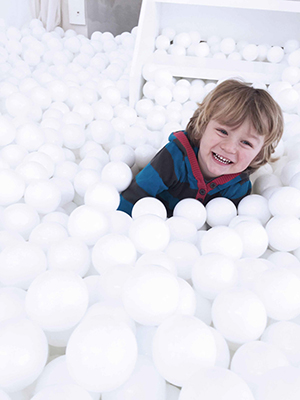
Pearlfisher, a London-based creative design agency, hosted a pop-up ball pit at Christmas as an instigator for creative thinking, a channel for charitable giving, a driver for brand awareness and a case study in the power of play. Agency Christmas cards are both an opportunity to show their capabilities, and to differentiate their brand from competitors, all whilst celebrating the season, raising money, and showing the importance of play in creativity. Jump In! was an immersive installation to galvanise stagnant Christmas communications, retaining Pearlfisher's philosophy of designing for good, whilst bringing in new business. Used to support a charity partner, Right to Play, in its advocacy of the power of play to empower and educate children facing adversity, the campaign would donate £1 for every visitor. The installation, and the participants' experiences went viral, with 15,000 booking requests, exceeded charitable donations by 600%, and earned cross-platform media coverage.
The 160-year-old Hydes Brewery capitalised on its expertise by creating an experimental brewery to tap into a new generation of urban drinkers that had been moving into Manchester. Hydes Brewery was struggling to adjust to changing socio-demographics in its drinking heartland, the 'craft' beer revolution and a saturated marketplace, so it decided to downsize and relocate the business. Hydes utilised its brewing expertise to launch a new brewery – The Beer Studio – with an experimental portfolio of ales on the edge of Manchester's creative quarter, Media City. This engaged the city's new generation of urban drinkers with every brew batch selling out within two weeks of release, an 828% ROI in the first two years and a 24% ongoing year-on-year increase in volume sales.

